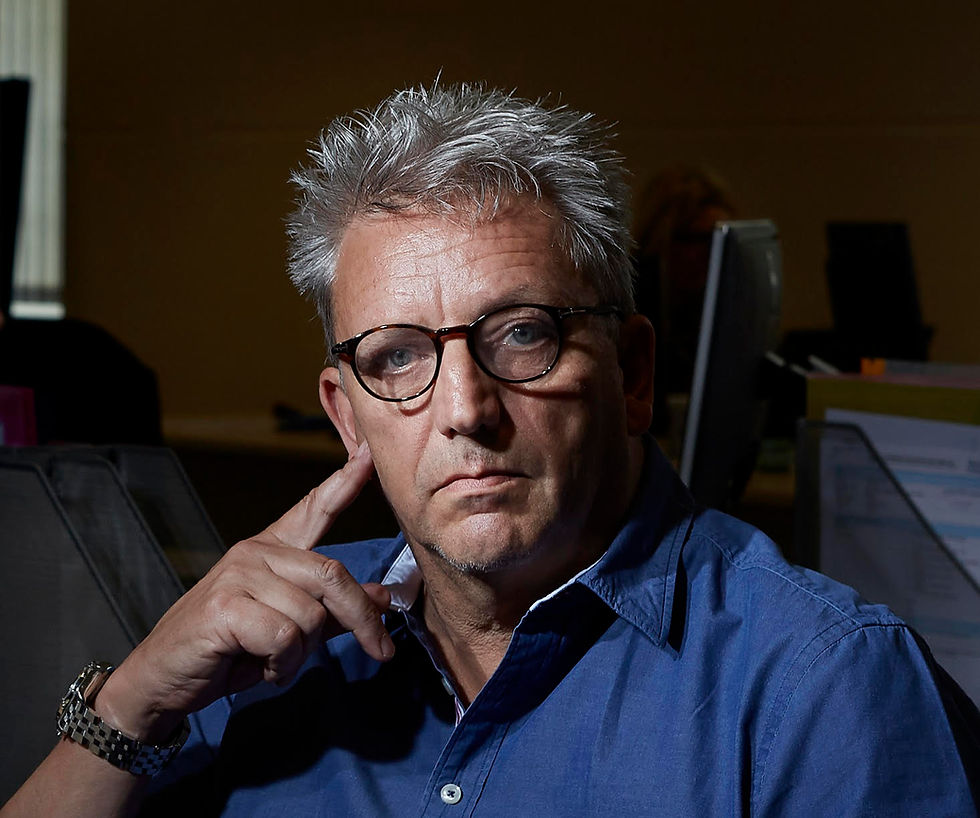IOW - Dedicated Female Facilities
- axisaberdeen

- Jan 20, 2021
- 4 min read
Updated: Feb 17, 2023

Women have worked in the offshore environment for decades and even though their numbers have grown from a very limited minority, it is no longer surprising to find a representation of women in all levels of offshore operations. What is more surprising is how the speed of facility upgrades continues to flag behind the progress of incumbent roles, and as any member of any minority group can attest to, it can often be daunting to rock the boat and request for change. So, time progresses, and the attitude becomes one of acceptance and silent distress. The below is a thought leadership piece by one of the Inclusive Offshore Working project team, Olayide Akinsomi, based on her experience of working on various offshore installations and proposing solutions to collectively drive a step change that creates an inclusive environment for women.
The exciting life of a Project Execution Lead (or so I like to tell myself!) comes with frequent travel to, and time spent living, on several North Sea installations. This has always been an interesting expedition and even more so for a woman working in a male dominated environment that wasn’t initially designed for a growing workforce of mixed gender. And as a woman, the most glaring absence that I have noticed on the installations has been the continued lack of dedicated female facilities.
Through the course of this project, we have received similar feedback from other women that work on offshore installations, the most frequent commentary being that facilities such as female toilets & changing rooms are classed as “not required” because there aren’t enough women to justify having such dedicated facilities. I say that having a female workforce of any number, even 1, is enough justification. The few installations that have dedicated facilities for women are not exempt from improvement either. We see adaptations made to certain areas but not in the common areas like office locations, locker rooms or recreational areas (not having toilets in your working area, for example and having to climb up several flight of stairs to use the toilet for any reason is not the most ideal of situations). Another issue comes from respect of using facilities and the regularity of male colleagues using those female toilets due to convenience, rather than the numerously abundant male toilets.
The results of a recent survey carried out by AXIS Network & Step Change in Safety for the inclusive offshore working project in October 2020 indicated that just 41% of respondents work on installations with dedicated female cabins/changing rooms. In 2020, this is the peculiar reality for any workforce to face.
The survey also highlighted the unavailability of suitable sanitary disposal facilities and the lack of sanitary products available offshore, with just 16% responding “Yes” to having feminine hygiene products available to purchase at the bond. I can relate with this as most of the offshore installations I have visited and worked on tend not to stock sanitary products in the bond, or to have dedicated sanitary bins onboard. Even the installations that have considered and included dedicated women’s facilities don’t typically stock sanitary products or bins. When there are no dedicated bins in women’s facilities to dispose of items (often classified as hazardous waste), the resultant effect tends to be embarrassment and a certain discomfort for those involved. As one plans to discretely wrap the used products in toilet paper whilst trying to make it across to communal bins without detection or one becoming advised in some instances, that all used product must be handed to medic on board for disposal due to the nature of waste. Interesting and awkward situation for both the medic and the staff member involved.
Talking about periods may still be considered taboo in modern culture, but we need to recognize that the lack of awareness creates more unnecessary issues than should be present, especially given that this is one matter that can be resolved so easily. In response to the question above, "Are sanitary products available where you work?", 62% responded “don’t know”. This is the likely result of period stigmatization, which prevents women from being comfortable enough to enquire about the suitability of the facility they will be working on, and particularly if they need to arrive with their own products.
We must view this avoidable discomfort in workplaces against the significance of the Scottish government recently passing new legislation to improve access to period products to anyone who needs them, covering tampons, pads and reusables. The drive for practical and progressive attitudes towards the reality of periods must continue and there is clearly still a lot of work on this front to be done offshore to ensure women working feel accommodated by the company responsible for their welfare.
Some simple actions that can be taken onboard various offshore assets to ensure inclusivity for all the offshore workforce include:
Provide dedicated female toilets/changing rooms
Encourage respect of those facilities by highlighting that they are only to be used by women working on the installation
Make sanitary bins available at required stations throughout the installation or, even better, place in bedrooms women are using
Ensure the adequate supply of sanitary products and stocked in bond
In the 13 years of my extensive career, I have seen a lot of progress in making offshore facilities more accessible to the women who continue to join the industry’s workforce. I will say that reasonable changes have happened to integrate female facilities, but a lot more still needs to be done.




